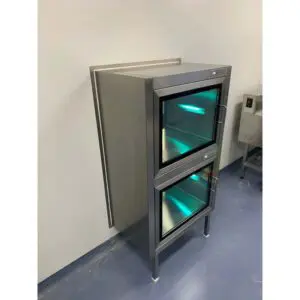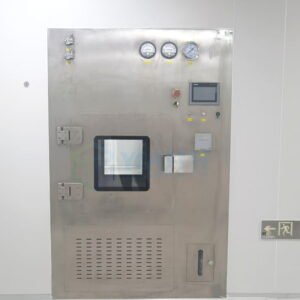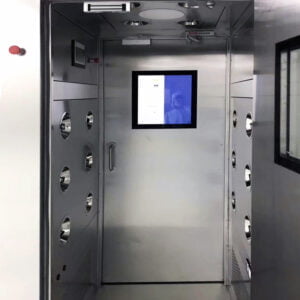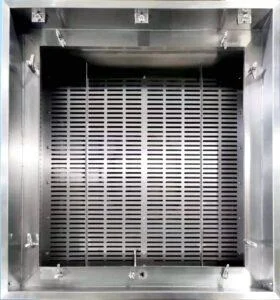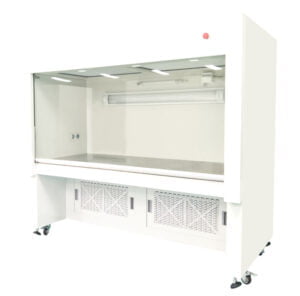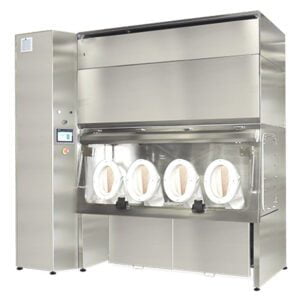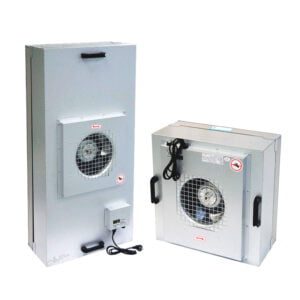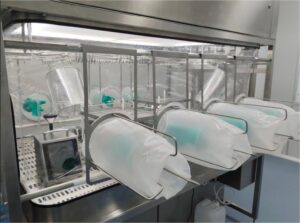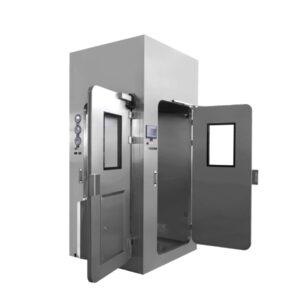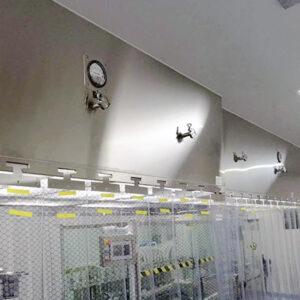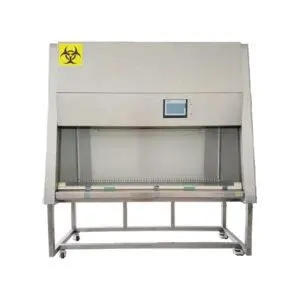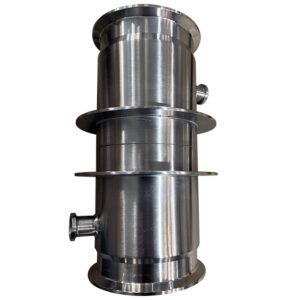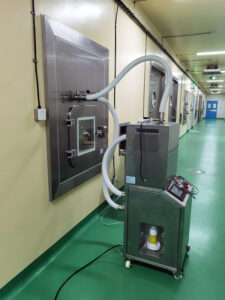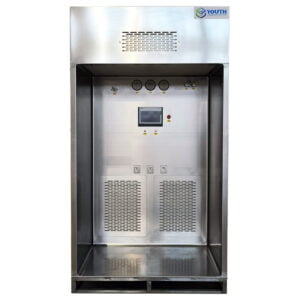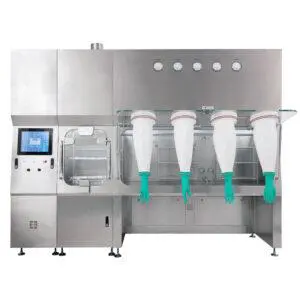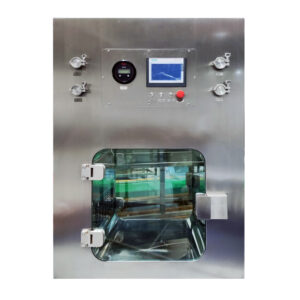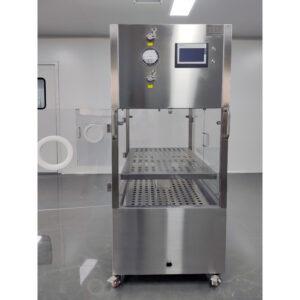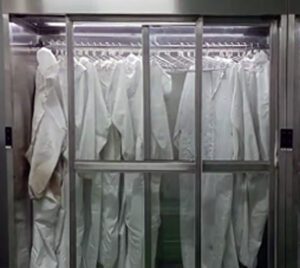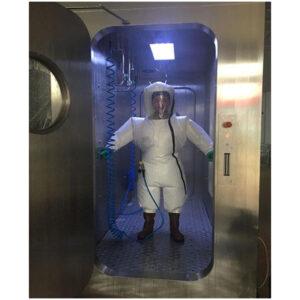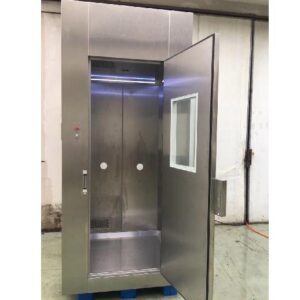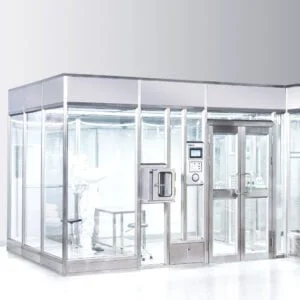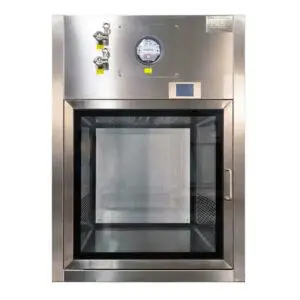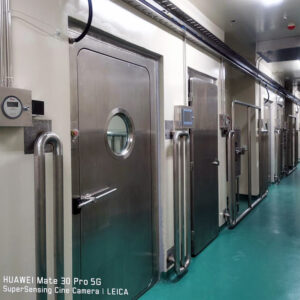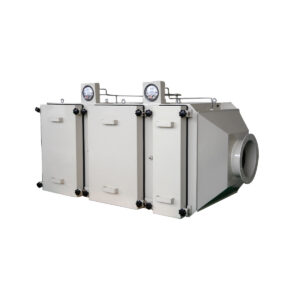In the wake of chemical accidents or exposure, every second counts. Emergency chemical shower rooms stand as crucial lifelines, offering immediate decontamination and potentially life-saving intervention. These specialized facilities are designed to swiftly rinse hazardous substances from the body, minimizing the risk of severe injury or long-term health effects. As industries increasingly prioritize worker safety, understanding the intricacies of emergency chemical shower rooms has become paramount.
The importance of emergency chemical shower rooms cannot be overstated in environments where hazardous materials are present. These facilities serve as the first line of defense against chemical exposure, providing a rapid and effective means of decontamination. From proper installation and maintenance to optimal usage protocols, a comprehensive understanding of these safety systems is essential for any organization dealing with potentially dangerous substances.
As we delve into the world of emergency chemical shower rooms, we'll explore their design, functionality, and critical role in workplace safety. This guide aims to equip you with the knowledge necessary to implement, maintain, and utilize these vital safety features effectively. Whether you're a safety manager, facility designer, or industry professional, the insights provided here will help ensure your emergency response measures are up to par with the latest standards and best practices.
"Emergency chemical shower rooms are not just a regulatory requirement; they are a critical component of a comprehensive safety strategy, capable of preventing severe injuries and saving lives in the event of chemical exposure."
What are the key components of an emergency chemical shower room?
An emergency chemical shower room is a specialized facility designed to provide rapid decontamination in the event of chemical exposure. These rooms are equipped with several essential components, each playing a crucial role in the safety and effectiveness of the decontamination process.
At the heart of every emergency chemical shower room is the shower system itself. This typically consists of a high-volume, low-pressure shower head capable of delivering a substantial amount of water quickly and evenly. The shower is activated by an easy-to-use valve or pull chain, ensuring that even in a state of panic or with impaired vision, the user can quickly initiate the decontamination process.
Beyond the shower, these rooms often include additional safety features such as eyewash stations, non-slip flooring, and proper drainage systems. The layout is designed to allow for easy access and movement, even when the shower is in use.
"A well-designed emergency chemical shower room incorporates multiple safety features, creating a comprehensive decontamination environment that can effectively address various types of chemical exposures."
| Component | Function |
|---|---|
| Shower Head | Delivers high-volume water flow |
| Activation Mechanism | Easily accessible valve or pull chain |
| Eyewash Station | Provides targeted eye irrigation |
| Non-slip Flooring | Prevents falls during use |
| Drainage System | Safely removes contaminated water |
The effectiveness of an emergency chemical shower room lies not just in its individual components, but in how they work together to create a safe and efficient decontamination environment. Proper design ensures that all elements are easily accessible and can be used simultaneously if needed. This holistic approach to safety is what makes YOUTH emergency chemical shower rooms a critical asset in any facility dealing with hazardous materials.
How does the design of emergency chemical shower rooms impact their effectiveness?
The design of emergency chemical shower rooms plays a pivotal role in their effectiveness during critical situations. Every aspect, from the layout to the materials used, contributes to the overall functionality and safety of these facilities.
One of the primary considerations in the design of emergency chemical shower rooms is accessibility. These rooms must be easily reachable from all areas where chemical exposure risks exist. The entrance should be wide enough to accommodate a person who may be disoriented or assisted by others. Inside the room, there should be ample space for movement, even when the shower is in use.
The shower itself is designed to deliver a high volume of tepid water, typically between 20 and 30 gallons per minute, at a low pressure to prevent further injury. The shower head is usually positioned to provide full-body coverage, ensuring thorough decontamination.
"The design of emergency chemical shower rooms goes beyond mere functionality; it's about creating an environment that can effectively respond to various emergency scenarios while prioritizing user comfort and safety."
| Design Element | Purpose |
|---|---|
| Wide Entrance | Ensures easy access in emergencies |
| Spacious Interior | Allows for movement and assistance |
| High-Volume Shower | Provides thorough decontamination |
| Tepid Water Supply | Prevents hypothermia during prolonged use |
| Appropriate Lighting | Enhances visibility and safety |
The materials used in the construction of emergency chemical shower rooms are also carefully chosen. They must be resistant to corrosion and chemical damage, easy to clean, and capable of withstanding frequent use. Non-slip flooring is essential to prevent falls, especially when the floor is wet.
Lighting is another crucial design element. Bright, reliable lighting ensures that the room can be used effectively at any time, day or night. Some designs incorporate emergency lighting systems to function even during power outages.
The design of emergency chemical shower rooms also takes into account the need for privacy. While immediate decontamination is the primary concern, providing a sense of privacy can help alleviate some of the stress and discomfort associated with using these facilities.
By carefully considering all these design elements, manufacturers like those behind Emergency chemical shower rooms create facilities that not only meet regulatory requirements but also provide the best possible protection for users in emergency situations.
What are the regulatory standards governing emergency chemical shower rooms?
Emergency chemical shower rooms are subject to a range of regulatory standards designed to ensure their effectiveness and reliability. These standards cover various aspects, from installation and maintenance to performance requirements.
In the United States, the primary regulatory body overseeing emergency chemical shower rooms is the Occupational Safety and Health Administration (OSHA). OSHA's standard 1910.151(c) mandates that "where the eyes or body of any person may be exposed to injurious corrosive materials, suitable facilities for quick drenching or flushing of the eyes and body shall be provided within the work area for immediate emergency use."
While OSHA provides the regulatory framework, the specific requirements for emergency chemical shower rooms are detailed in the American National Standards Institute (ANSI) Z358.1 standard. This standard is widely recognized and adopted by safety professionals worldwide.
"Compliance with ANSI Z358.1 is not just about meeting regulatory requirements; it's about ensuring that emergency chemical shower rooms are capable of providing effective decontamination when it matters most."
| Regulatory Body | Standard | Key Requirements |
|---|---|---|
| OSHA | 1910.151(c) | Mandates provision of emergency facilities |
| ANSI | Z358.1 | Details specific requirements for installation, operation, and maintenance |
The ANSI Z358.1 standard covers several key areas:
Water Temperature: The standard requires that the water be "tepid," typically between 60°F and 100°F (16°C to 38°C).
Flow Rate: Emergency showers must deliver at least 20 gallons (75.7 liters) of water per minute for a minimum of 15 minutes.
Activation: The valve must be designed to remain open once activated until intentionally closed.
Location: The standard specifies that emergency showers should be located within 10 seconds of travel time from the hazard.
Visibility: The area around the shower must be well-lit, and the equipment should be identified with a highly visible safety sign.
Testing and Maintenance: Weekly activation of the equipment is required to ensure proper operation, with a more thorough annual inspection.
It's important to note that while these standards provide a baseline, many organizations choose to exceed these requirements to further enhance safety. For instance, some facilities opt for emergency chemical shower rooms with higher flow rates or additional features like integrated communication systems.
Staying up-to-date with these regulations and standards is crucial for any organization implementing emergency chemical shower rooms. Regular audits and inspections can help ensure ongoing compliance and identify areas for improvement in your emergency response capabilities.
How should emergency chemical shower rooms be maintained and tested?
Proper maintenance and regular testing of emergency chemical shower rooms are crucial to ensure their reliability and effectiveness when needed. A well-maintained facility can mean the difference between a minor incident and a serious injury.
The maintenance of emergency chemical shower rooms should be a structured, ongoing process. This includes regular inspections, cleaning, and testing of all components. The shower head, valves, and plumbing should be checked for any signs of corrosion, leaks, or blockages. The area around the shower should be kept clear of obstructions at all times.
Testing is a critical aspect of maintenance. ANSI Z358.1 standard recommends weekly activation of the shower to verify proper operation and ensure that flushing fluid is available. This also helps to clear the line of any sediment build-up and reduces the risk of microbial contamination.
"Regular testing and maintenance of emergency chemical shower rooms is not just a regulatory requirement; it's a proactive measure that ensures these critical safety systems are always ready when needed."
| Maintenance Task | Frequency | Purpose |
|---|---|---|
| Visual Inspection | Daily | Check for visible issues or obstructions |
| Activation Test | Weekly | Ensure proper operation and clear lines |
| Full Flow Test | Annually | Verify compliance with flow rate standards |
| Tepid Water Check | Regularly | Ensure water temperature is within range |
Annual inspections should be more comprehensive, including a full flow test to ensure the shower meets the required flow rate of at least 20 gallons per minute. This is also an opportunity to check the water temperature to ensure it remains in the tepid range.
Maintenance should also include regular cleaning of the shower room. This not only ensures a hygienic environment but also helps identify any potential issues with the equipment or structure of the room.
Documentation is a crucial part of the maintenance process. All inspections, tests, and maintenance activities should be recorded. This creates a paper trail that can be valuable for regulatory compliance and can help identify patterns or recurring issues.
It's also important to regularly review and update emergency procedures related to the use of chemical shower rooms. This includes training staff on proper use and ensuring that everyone in the facility knows the location of these emergency stations.
By implementing a robust maintenance and testing program, organizations can ensure that their emergency chemical shower rooms remain in optimal condition, ready to provide critical decontamination when every second counts.
What training is necessary for effective use of emergency chemical shower rooms?
Effective use of emergency chemical shower rooms relies heavily on proper training. Even the most well-designed and maintained facility can fall short if those who need to use it are unprepared or unsure of the correct procedures.
Training for emergency chemical shower rooms should be comprehensive, covering not just how to use the equipment, but also when to use it, what to do before and after use, and how to assist others who may need help. This training should be provided to all employees who work in areas where chemical exposure is a risk, not just those directly handling hazardous materials.
The first aspect of training should focus on recognition. Employees need to be able to quickly identify situations that require the use of an emergency chemical shower. This includes understanding the types of chemicals they work with and the potential hazards associated with each.
"Effective training for emergency chemical shower use goes beyond simple operation instructions; it empowers employees to make quick, informed decisions in high-stress situations, potentially saving lives."
| Training Component | Description | Importance |
|---|---|---|
| Recognition | Identifying situations requiring shower use | Critical for quick response |
| Operation | Proper activation and use of the shower | Ensures effective decontamination |
| Post-use Procedures | Steps to take after using the shower | Facilitates proper medical follow-up |
| Assistance Techniques | How to help others use the shower | Enhances overall safety response |
The next crucial component is operation training. This should cover how to activate the shower, the importance of removing contaminated clothing, and how long to remain under the water flow. Many experts recommend a minimum of 15 minutes of flushing, but this can vary depending on the chemical involved.
Training should also cover what to do after using the emergency shower. This includes seeking medical attention, reporting the incident, and following any specific post-exposure protocols for the chemicals involved.
Another important aspect is training on how to assist others who may need to use the shower. This could include helping to remove contaminated clothing or activating the shower for someone who is incapacitated.
Regular drills and simulations can be extremely valuable in reinforcing this training. These exercises help employees become familiar with the location and operation of emergency chemical shower rooms under less stressful conditions, making it more likely they'll respond effectively in a real emergency.
It's also crucial to keep training up to date. As new chemicals are introduced to the workplace or procedures change, training should be updated accordingly. Regular refresher courses can help ensure that all employees maintain their knowledge and skills.
By providing comprehensive and ongoing training, organizations can ensure that their investment in emergency chemical shower rooms translates into real protection for their employees. This approach not only enhances safety but also demonstrates a commitment to employee well-being that can boost morale and confidence in the workplace.
How do emergency chemical shower rooms integrate with broader safety protocols?
Emergency chemical shower rooms are not standalone safety measures; they form an integral part of a comprehensive safety protocol in facilities dealing with hazardous materials. Their effectiveness is maximized when they are seamlessly integrated into the broader safety ecosystem of an organization.
The integration of emergency chemical shower rooms into safety protocols begins with risk assessment. Organizations need to identify all potential chemical hazards in their facilities and ensure that emergency shower rooms are strategically located to address these risks. This assessment should also consider factors like the types of chemicals used, the likelihood of exposure, and the potential severity of exposure incidents.
Once the risks are identified, emergency response plans should be developed that incorporate the use of chemical shower rooms. These plans should detail the steps to be taken in various emergency scenarios, clearly outlining when and how emergency showers should be used.
"The true value of emergency chemical shower rooms is realized when they are seamlessly integrated into a facility's overall safety strategy, creating a coordinated and comprehensive approach to chemical hazard management."
| Integration Aspect | Description | Benefit |
|---|---|---|
| Risk Assessment | Identifying chemical hazards and exposure risks | Ensures appropriate placement and design of shower rooms |
| Emergency Response Plans | Detailed procedures for various scenarios | Provides clear guidance for emergency situations |
| Communication Systems | Alarms and notification systems | Facilitates rapid response and assistance |
| Personal Protective Equipment | Compatibility with PPE protocols | Ensures effective decontamination without compromising protection |
Communication systems play a crucial role in this integration. Many facilities incorporate alarm systems that are activated when an emergency shower is used. This alerts safety personnel and medical staff, ensuring that additional help is quickly dispatched to the location.
The use of emergency chemical shower rooms should also be integrated with personal protective equipment (PPE) protocols. Employees need to understand how to quickly remove contaminated PPE before using the shower, and how the use of certain types of PPE might affect the decontamination process.
Integration also extends to post-incident procedures. After an emergency shower is used, there should be clear protocols for medical evaluation, incident reporting, and follow-up actions. This might include procedures for cleaning and resetting the shower room, restocking any associated first aid supplies, and conducting an incident investigation to prevent future occurrences.
Training programs should reflect this integrated approach. Employees should understand not just how to use the emergency shower, but how its use fits into the broader emergency response framework of the organization.
Regular safety audits and drills can help ensure that the integration of emergency chemical shower rooms with other safety protocols remains effective. These exercises can identify any gaps or inconsistencies in the overall safety strategy and provide opportunities for improvement.
By fully integrating emergency chemical shower rooms into their safety protocols, organizations can create a more robust and effective response to chemical hazards. This holistic approach not only enhances safety but also demonstrates a commitment to creating a comprehensive safety culture that protects employees at every level.
What innovations are shaping the future of emergency chemical shower rooms?
The field of emergency chemical shower room design and functionality is continually evolving, driven by technological advancements and a growing emphasis on workplace safety. These innovations are reshaping how we approach emergency decontamination, making it more effective, efficient, and user-friendly.
One of the most significant innovations in recent years is the development of smart shower systems. These advanced units can monitor water temperature and flow rate in real-time, automatically adjusting to ensure optimal decontamination conditions. Some systems even incorporate sensors that can detect when a person enters the shower room, automatically activating the water flow without requiring manual operation.
Another area of innovation is in water conservation. While emergency showers need to provide a high flow rate for effective decontamination, new designs are exploring ways to reduce water waste without compromising safety. This includes systems that can recirculate and filter water during use, maintaining the necessary flow rate while significantly reducing overall water consumption.
"The future of emergency chemical shower rooms lies in smart, responsive systems that not only provide effective decontamination but also offer enhanced monitoring, reporting, and resource efficiency."
| Innovation | Description | Benefit |
|---|---|---|
| Smart Shower Systems | Real-time monitoring and adjustment of water parameters | Ensures optimal decontamination conditions |
| Water Conservation Technology | Recirculation and filtration systems | Reduces water waste while maintaining effectiveness |
| Enhanced Privacy Features | Modular designs with privacy screens | Improves user comfort and encourages use |
| Integrated Communication Systems | Built-in alarms and two-way communication devices | Facilitates rapid response and assistance |
Privacy considerations are also driving innovation in emergency shower room design. New modular designs incorporate privacy screens or curtains that can be quickly deployed, providing a sense of dignity to the user without impeding the decontamination process. This can be particularly important in mixed-gender workplaces or in situations where clothing removal is necessary for effective decontamination.
Advancements in materials science are leading to the development of new surfaces for emergency shower rooms that are not only highly resistant to chemical damage but also inherently antimicrobial. These materials can help maintain a more hygienic environment and reduce the risk of secondary infections.
Integration with broader safety systems is another area of innovation. Some emergency shower rooms now come equipped with built-in alarm systems and two-way communication devices, allowing users to quickly alert safety personnel and receive guidance during the decontamination process.
Looking to the future, we may see the incorporation of augmented reality (AR) technology in emergency chemical shower rooms. AR could provide users with real-time instructions, guiding them through the decontamination process and helping them assess the effectiveness of their efforts.
As environmental concerns grow, we're also likely to see more focus on sustainable design in emergency shower rooms. This could include the use of recycled materials in construction, energy-efficient lighting and pumping systems, and designs that minimize the environmental impact of chemical runoff.
These innovations represent exciting developments in the field of emergency chemical safety. As technology continues to advance, we can expect to see even more sophisticated and effective emergency chemical shower rooms, further enhancing workplace safety and emergency response capabilities.
Conclusion
Emergency chemical shower rooms stand as critical components in the landscape of workplace safety, particularly in industries where the risk of chemical exposure is present. Throughout this exploration, we've delved into various aspects of these vital facilities, from their key components and design considerations to regulatory standards and maintenance requirements.
The effectiveness of emergency chemical shower rooms hinges on a multifaceted approach. Proper design ensures that these facilities are accessible, functional, and capable of providing thorough decontamination. Adherence to regulatory standards, such as those set by OSHA and ANSI, provides a framework for ensuring these facilities meet minimum safety requirements.
However, the presence of well-designed emergency shower rooms is just the beginning. Regular maintenance and testing are crucial to ensure these facilities are always ready when needed. Equally important is comprehensive training, empowering employees to recognize situations requiring the use of emergency showers and to use them effectively.
The integration of emergency chemical shower rooms into broader safety protocols creates a more robust and comprehensive approach to chemical hazard management. This holistic strategy not only enhances immediate response capabilities but also contributes to a culture of safety within an organization.
As we look to the future, innovations in technology and design promise to make emergency chemical shower rooms even more effective and efficient. From smart systems that monitor and adjust shower parameters in real-time to sustainable designs that conserve resources, these advancements will further enhance our ability to respond to chemical emergencies.
In conclusion, emergency chemical shower rooms are more than just a regulatory requirement or a safety feature. They represent a commitment to employee well-being and a proactive approach to managing chemical hazards. By investing in high-quality facilities like those offered by YOUTH, maintaining them properly, and integrating them into comprehensive safety strategies, organizations can create safer work environments and be better prepared to handle chemical emergencies when they arise.
The field of emergency chemical safety continues to evolve, and staying informed about the latest developments and best practices is crucial. By prioritizing the implementation and proper use of emergency chemical shower rooms, we can significantly reduce the risks associated with chemical exposure and create safer workplaces for all.
External Resources
Emergency Showers and Eyewash Stations – CCOHS – This resource provides detailed information on the importance, legal requirements, and specifications for emergency showers and eyewash stations, including installation, location, and maintenance guidelines.
Eye Wash Station and Emergency Showers – Design Criteria – The Joint Commission – This page outlines the design and operational criteria for eye wash stations and emergency showers, including OSHA requirements, installation guidelines, and specific standards from ANSI Z358.1-2014.
Emergency showers and eye wash stations – DENIOS US – This resource offers information on the importance of emergency showers and eye wash stations for handling hazardous materials, along with product options and installation recommendations.
OSHA Regulations for Emergency Showers and Eyewash Stations – This link directs to OSHA's official regulations regarding the provision of emergency showers and eyewash stations in workplaces where workers may be exposed to injurious corrosive materials.
ANSI Z358.1-2014 Standard for Emergency Eyewash and Shower Equipment – This is the official standard from ANSI that provides detailed requirements and guidelines for the installation, operation, and maintenance of emergency eyewash and shower equipment.
Emergency Shower and Eyewash Station Installation and Maintenance – Grainger – This resource from Grainger provides guidance on the installation, maintenance, and testing of emergency showers and eyewash stations to ensure compliance with safety standards.
Chemical Safety: Emergency Showers and Eyewash Stations – Lab Manager – This article discusses the critical role of emergency showers and eyewash stations in laboratory settings, highlighting their importance in chemical safety protocols.
Emergency Showers and Eyewash Stations: A Guide to Selection and Installation – Safety+Health – This guide from Safety+Health magazine offers practical advice on selecting and installing emergency showers and eyewash stations, ensuring they meet necessary safety standards.
Related Contents:
- Stainless Steel Chemical Shower Rooms: Durability Guide
- Enclosed Chemical Shower Rooms: Privacy and Safety
- Top 5 Portable Chemical Shower Rooms for Labs
- ADA Compliant Chemical Shower Rooms: Accessibility Guide
- Laboratory Chemical Shower Rooms: Essential Features
- Outdoor Chemical Shower Rooms: Weather-Resistant Options
- Chemical Shower Room Safety: 10 Essential Protocols
- 2025 Guide: Combination Eye Wash and Shower Rooms
- Sterility Test Isolator Maintenance: Schedules & Tips


